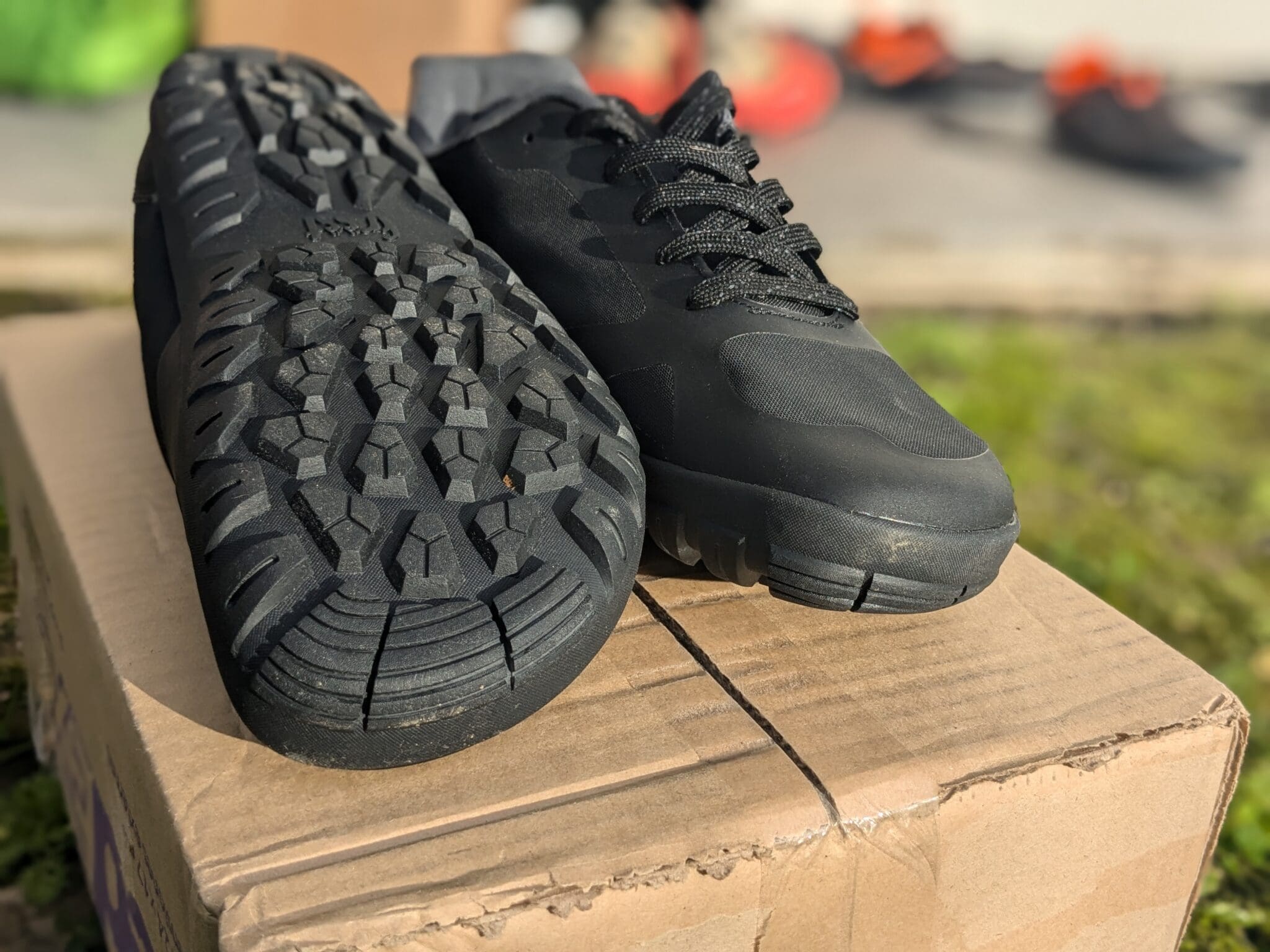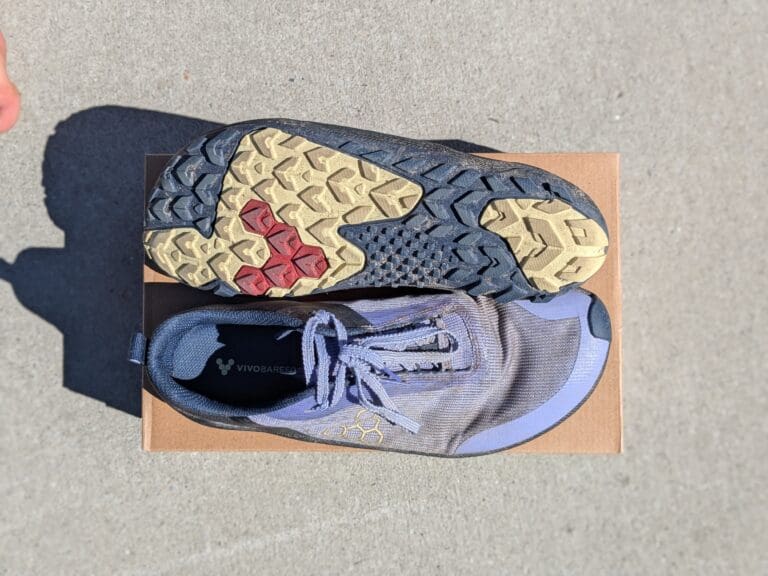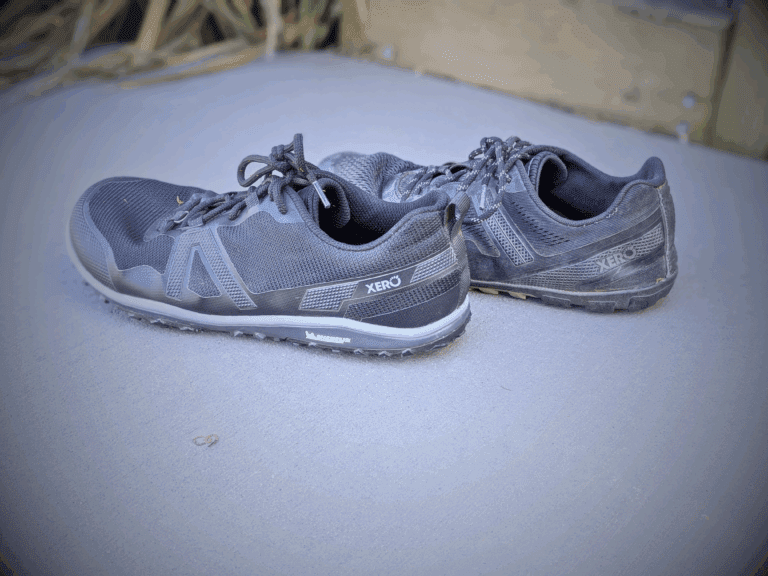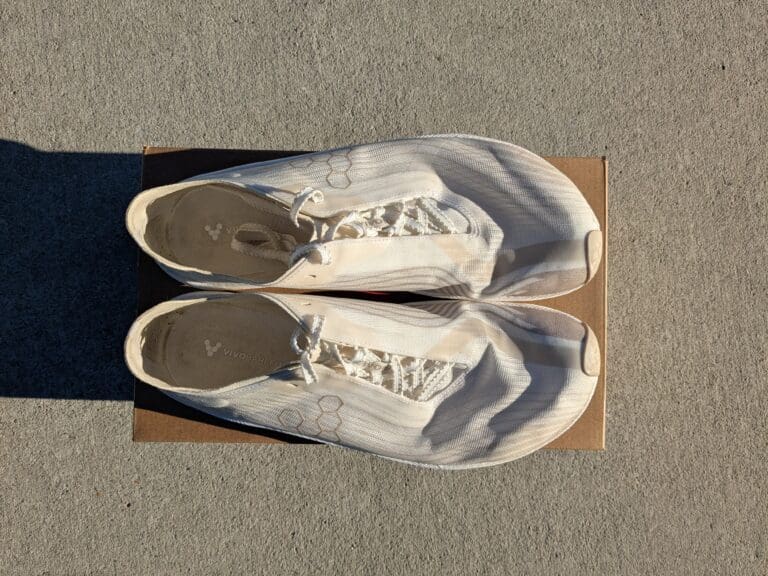Freet will be a breath of fresh air for those looking for a wider, deeper barefoot shoe.
But their website features a large number of models, and it’s hard to know which one is right for you!
So today, I’m comparing two of their most popular trail options to determine which is best for YOUR feet and what conditions they work best in.
Let’s get into this comparison review of the Freet Calver and Freet Feldom!
Freet Feldom
Type: Trail
Width: Wide
Stack height: 22mm
Weight: 7.5mm total stack height (4mm lugs)
A great all-rounder for the trial. Read the Full Review
Freet Calver
Type: Trail
Width: Wide
Stack height: 24mm
Weight: 9.5mm total stack height (6mm lugs)
Super duper grip and protective. Read the Full Review
The Feldom and Calver offer excellent depth, perfect for those needing more volume. If anything, I’d give the edge to the Freet Calver, but the Feldom is still very accommodating, ensuring that those with deep feet have plenty of room. This makes both shoes an ideal choice for wearers with this foot type. But if you find too much room (like I did), you can still use thicker insoles to fill out the room in the shoe. Freet sells these on their website.
Which minimal running shoe is for you?
Take a quick 5-question quiz to identify the perfect minimal running shoe for your feet! You'll get both road and trail options based on your answers!
When it comes to width, both shoes cater exceptionally well to wider feet. Both models are spacious and wide in the toe box, offering enough room for toes to splay naturally, making it a comfortable option for individuals with wider feet. It’s not just the forefoot either; the midfoot and heel of these options offer a ton of width, which helps if you’ve ever found Vivobarefoot or Xero Shoes tight in the past. If I had to choose, I would say the Feldom is more accommodating than the Calver due to the suppleness of the upper.
The heel lock is not a strong suit in either shoe, but the Calver is certainly better. One of the trade-offs of the Feldom’s softer upper is that the heel may feel less secure, leading to some slippage if not tightly laced. The semi-soft upper material helps to secure the foot in place through the midfoot, but the heel remains somewhat less locked in. The Calver has a similar issue, but the heel cup has a little more structure, which allows for a better lockdown. Although the material does run high up the achilles, so be sure to wear some long socks.
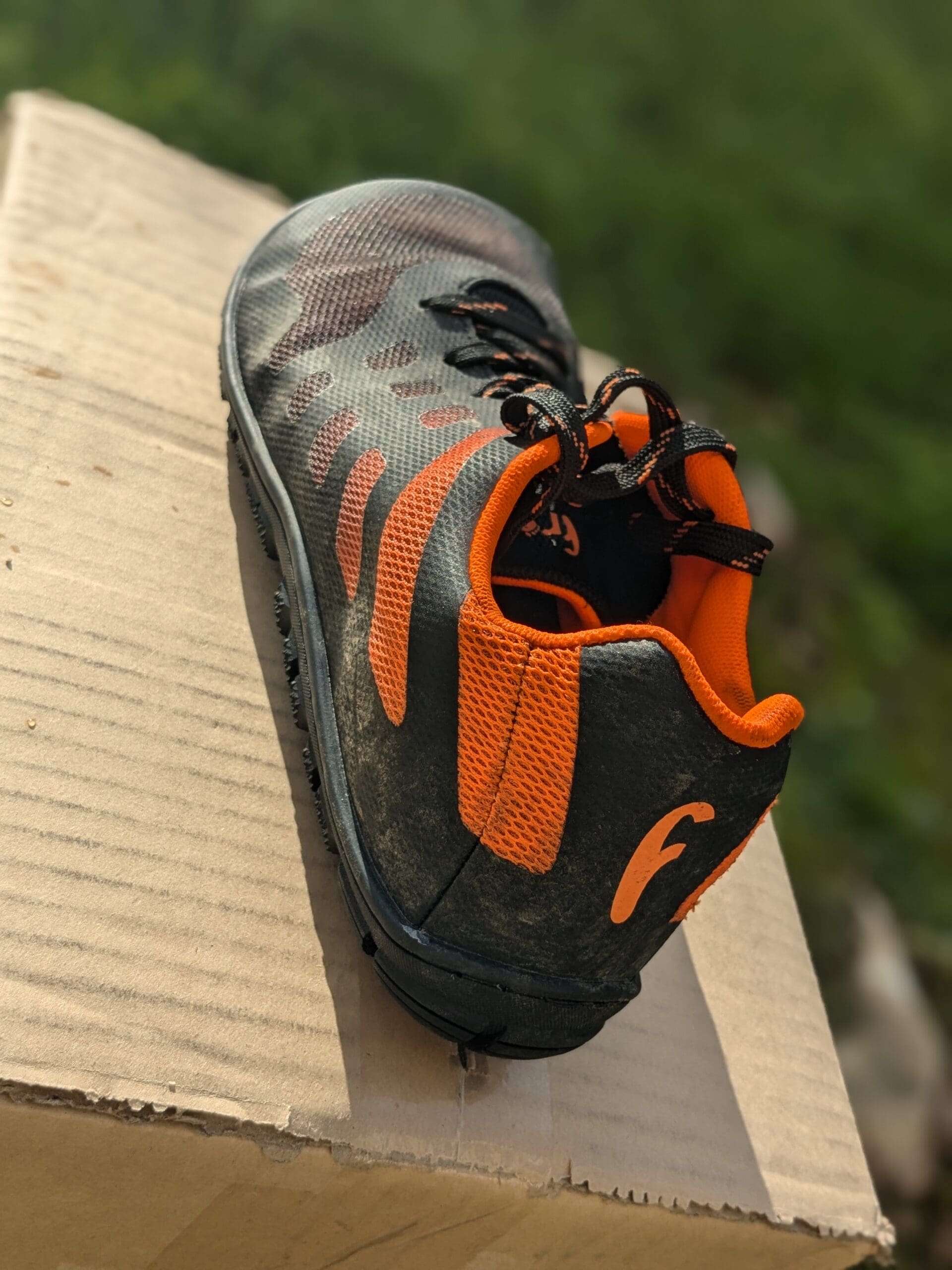
Secureness varies between both models, with a reliance on snug lacing. You want to be locked into the shoe when running on uneven terrain. No matter how grippy a shoe is, if your feet move within it, it will feel uneasy. This is where the Calver design has an advantage over the Feldom. The tougher material and overlays of the Calver help reduce movement within the shoe, whereas the Feldoms soft material allows more foot movement. It’s great for foot mechanics but could be better on technical terrain.

While both models fit true to size, always refer to the sizing guide on the Freet website! I chose an EU43 for both models, and for me, that’s strange because I normally go for an EU42/42.5. But all this comes down to US <-> EU conversions. Freet is designed on an EU last, and that sizing doesn’t translate perfectly to US sizing. So, I advise using the sizing guide to get the right size. And if you’re in between sizes, go down in the Feldom but go up in the Calver. The Feldom fits a little longer.
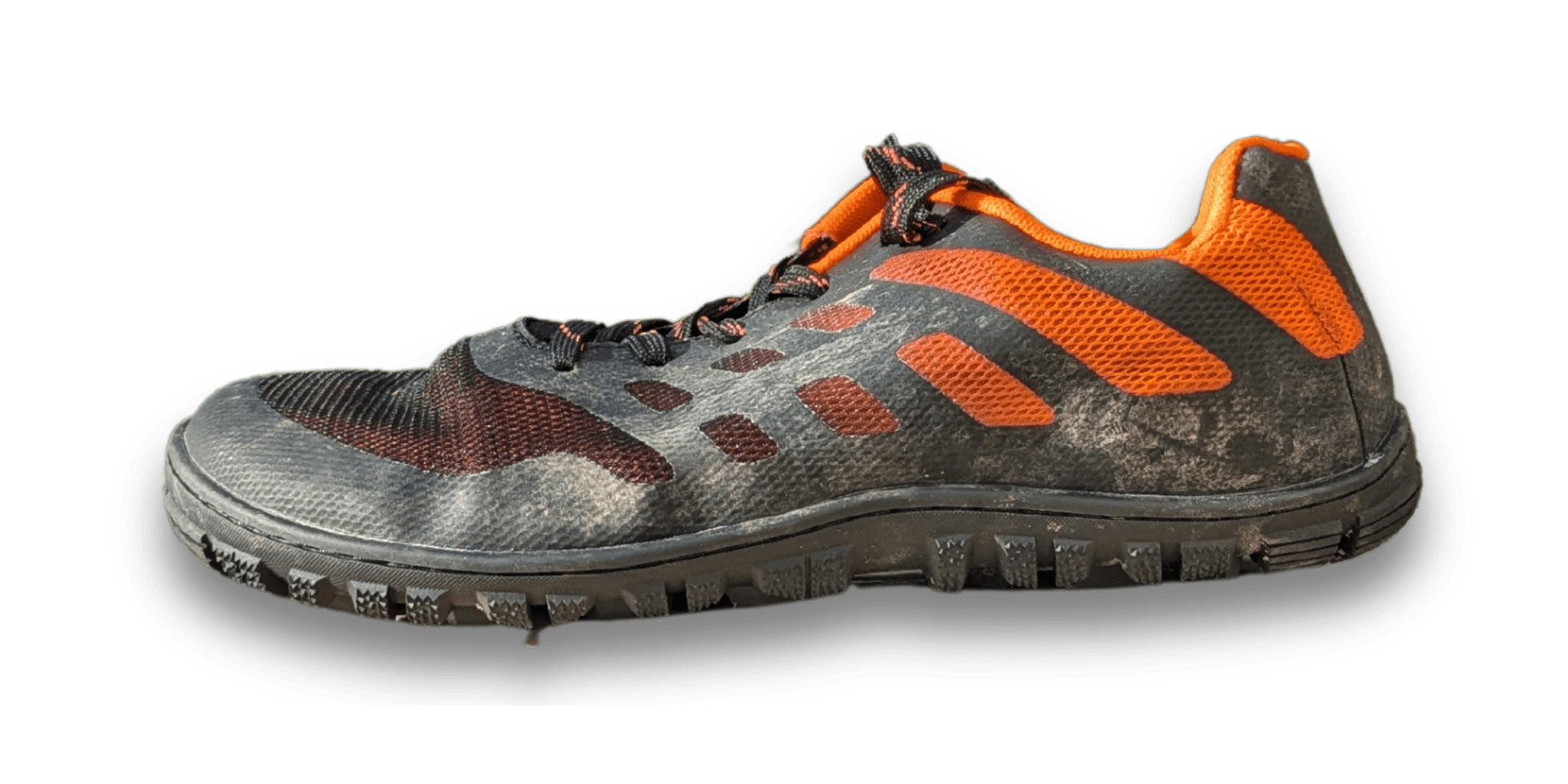
Freet Calver
Both options offer remarkable flexibility, making them feel like true barefoot shoes. Your feet move in all directions, and you need your shoes to do the same. Lucky for us, both the Feldom and Calver have a ton of flexibility, meaning you can bend and twist the shoes in any way your feet desire.
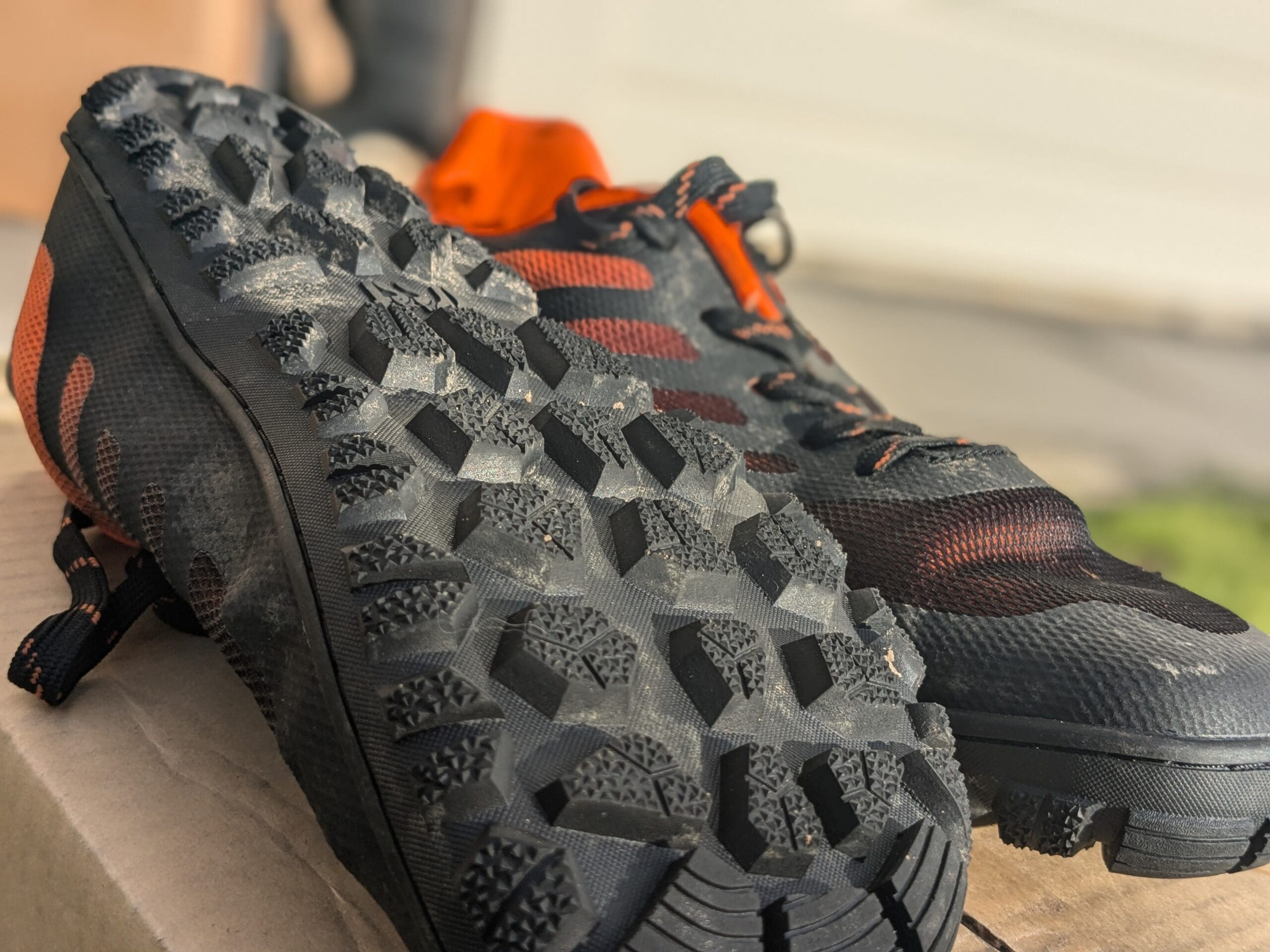
The grip on the Calver’s 6mm lugs is exceptional, providing superior traction on diverse surfaces. It is the true mud shoe. The deep lugs Calver’s offer grip I’ve not found on a trail shoe for a long time, keeping you secure on slippy paths. Though the Feldom features slightly shallower 4mm lugs, its grip is still decent and a little more versatile than the Calver’s. I wouldn’t hesitate to take the Feldom out in the wet or dry, but the Calver is great for those muddy trails.
Feldom’s less restrictive design promotes better foot mobility, while the Calver excels in varied terrain performance. The Feldom’s flexible upper allows for greater freedom of movement, enabling your foot to move naturally and adjust to the terrain beneath you. It is a great option for those seeking enhanced foot mobility without feeling constricted. But that’s not always ideal for the trail. While still flexible, the Calver provides more structure and secureness so your feet don’t move around in the shoe as much on uneven, slippy surfaces.

The larger lugs on both shoes give them a slightly cushioned and protective feel. In the Calver, the deeper 6mm lugs contribute to a more cushioned ride, which is odd considering how flexible this shoe is. The pseudo-cushioning effect from these larger lugs adds protection, too, meaning sharp rocks are less of a concern. The Feldom, with its 4mm lugs, still offers protection but remains closer to the ground, making it feel more minimal while still providing a good balance of ground feel and protection.
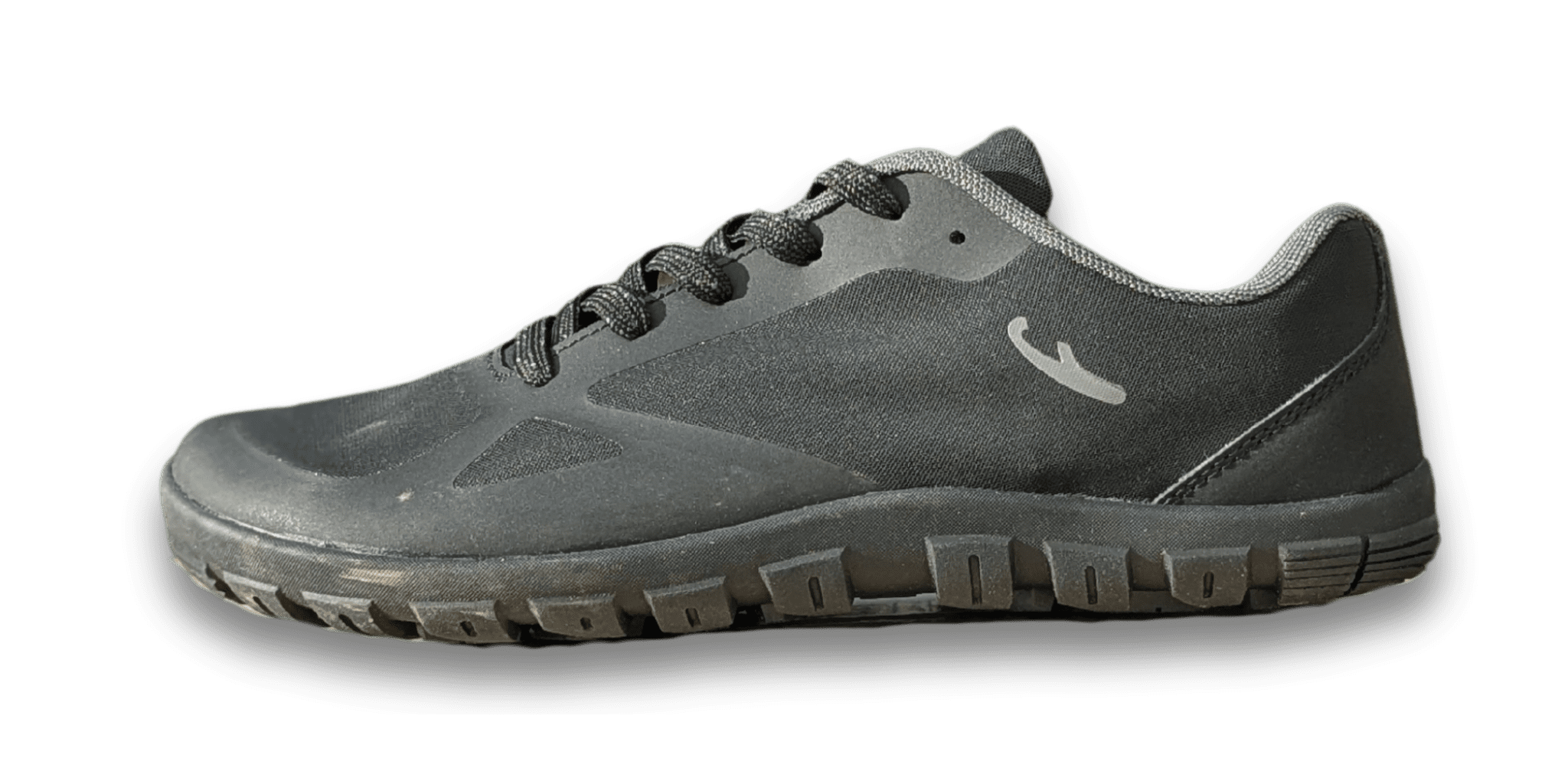
Freet Feldom
The outsoles pattern of the Feldom and Calver are built with durability in mind. The lugs on the underside of both shoes differ from the traditional chevron types we see on most trail shoes. These wider, chunkier lugs have more surface area, meaning if you venture onto hard-packed ground, you won’t find them to wear as quickly—a huge plus point for me. The Calver has a 6mm lug, meaning we’ll likely get more longevity out of them, but strictly speaking, these are both amazing outsole options.
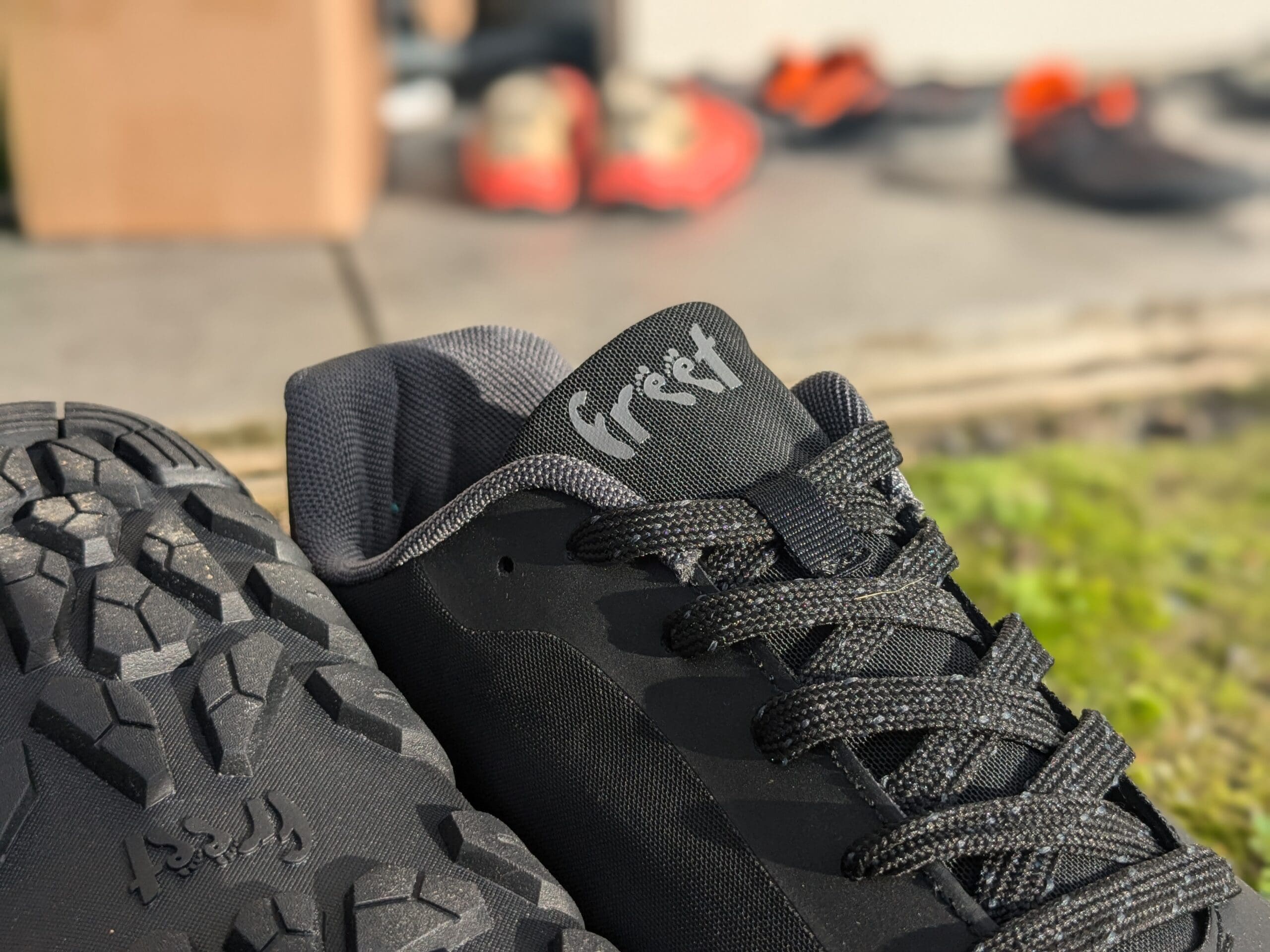
The upper protection in the Calver is more robust, making it better suited for rocky or abrasive terrain, while the Feldom prioritizes flexibility over durability. The Feldom’s soft upper is designed with flexibility and comfort, enhancing foot mobility but sacrificing some protective qualities. On the other hand, the Calver’s upper is made from tougher materials that provide better resistance to wear and tear, making it more suitable for harsh conditions where you need additional protection from rocks and sharp debris.
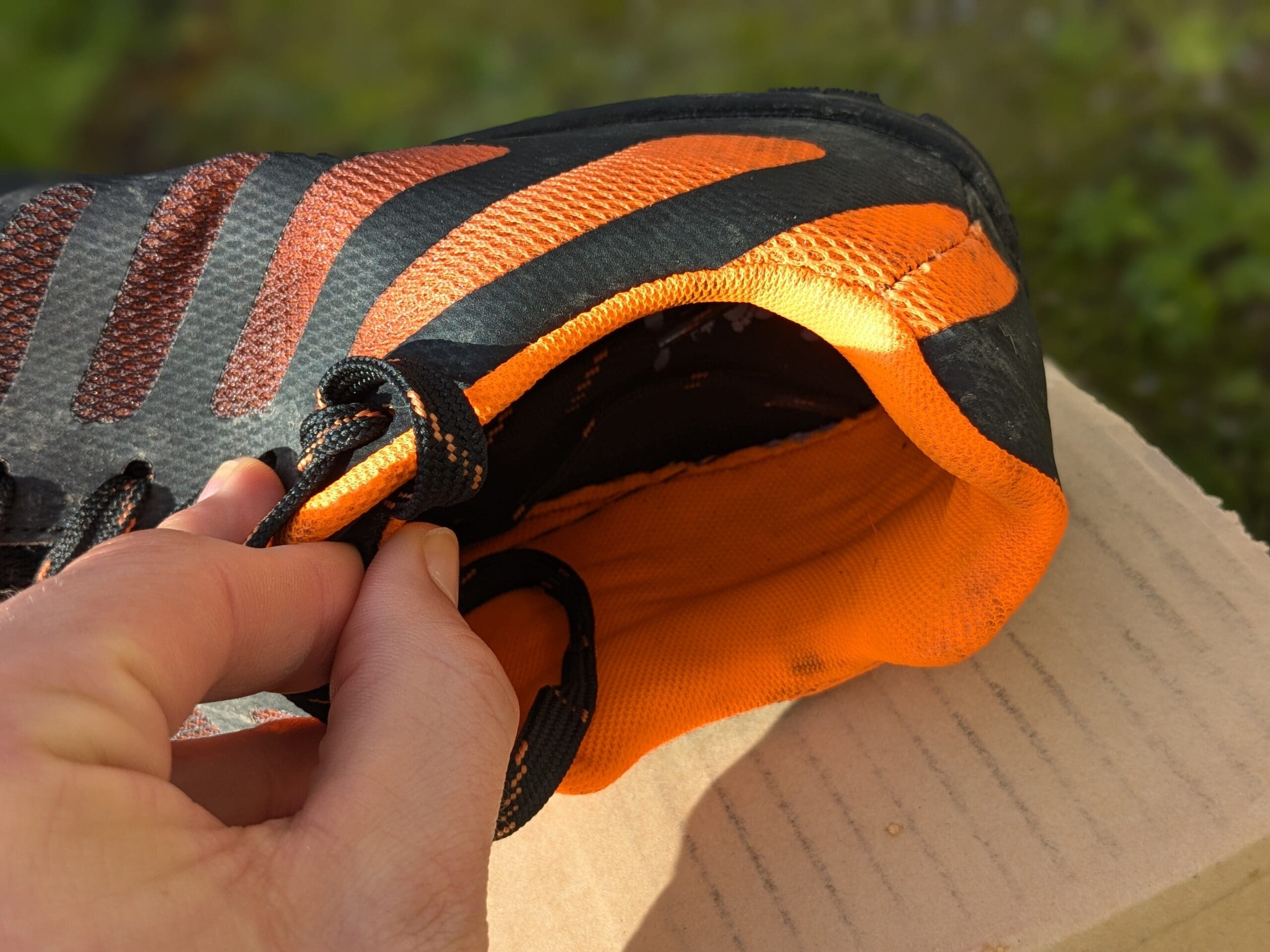
Both shoes are high quality for the price, but I’d give the material selection to the Calver. This is rather subjective, but I feel the Feldom is a cheaper design. The materials feel of a lower quality, and the design could do with an update. The Calver, by contrast, is manufactured with stronger, more protective materials throughout, especially in its upper. It’s a newer model, and I’m guessing Freet learned a few things when designing the other shoes.
Choosing between the Freet Feldom and Freet Calver is a fairly simple decision.
Do you run in VERY muddy conditions or in rocky and rough terrain?
The deeper lugs and more protective upper is a design that will excel in these conditions.
But if you want a great all-round trail shoe that can do a bit of everything?
The fit is so similar that if the shape of Freet shoes is right for you, you’ll likely find them both to be a great option.
Check out the full reviews for both shoes to dive deeper into the technical aspects.

Freet Feldom

Freet Calver
